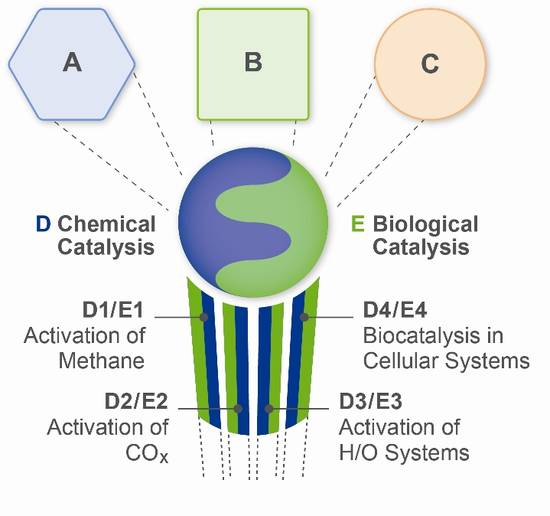Research Structure
Based on our research achievements since 2011, the organisation of the research program has shifted from a competence-oriented to a target-oriented structure that allows for elucidating complex catalytic processes in a more efficient and comprehensive manner.
The former Areas A, B, and C were merged into two new areas devoted to Chemical (Area D) and Biological Catalysis (Area E). The projects in both areas are intertwined to form four Research Bands: Activation of Methane D1/E1; Activation of Corbon Oxides D2/E2, Activation of H/O Systems D3/E3, and Biocatalysis in Cellular Systems D4/E4.
These are devoted to the same or similar target processes. Common to all Research Bands is the variation in complexity of the systems and a wide range of tailored experimental and theoretical methods.

